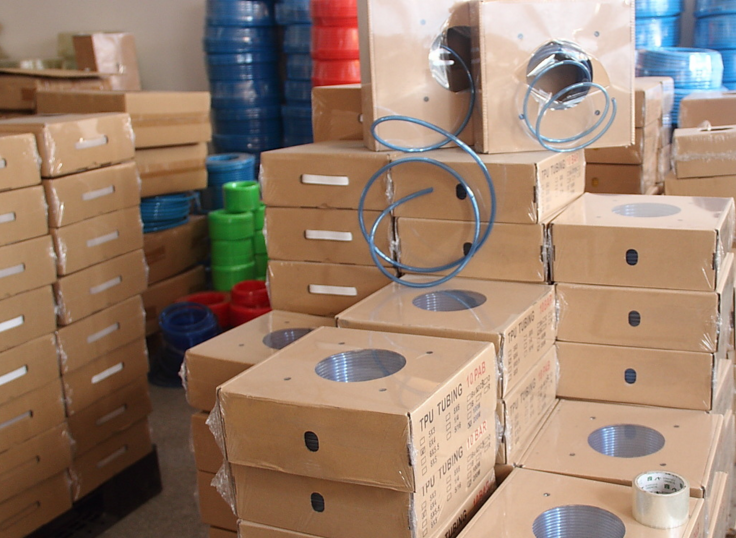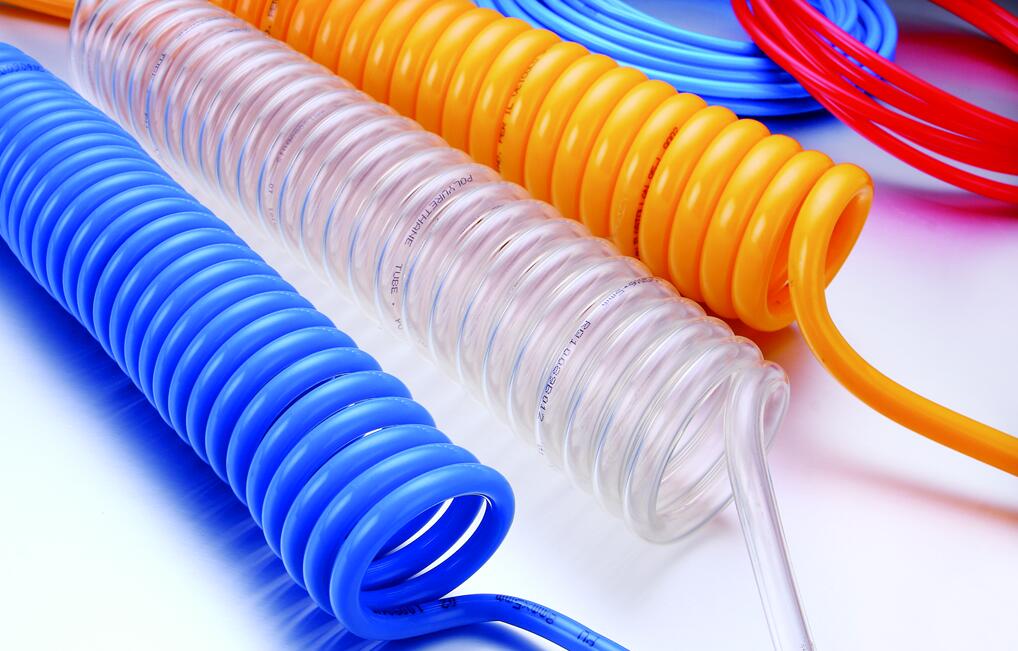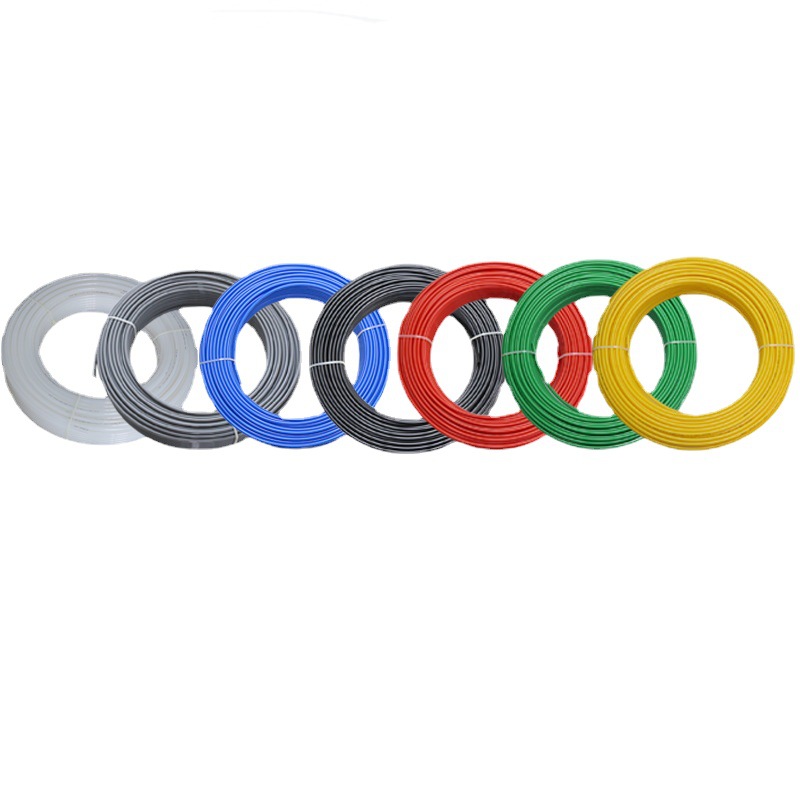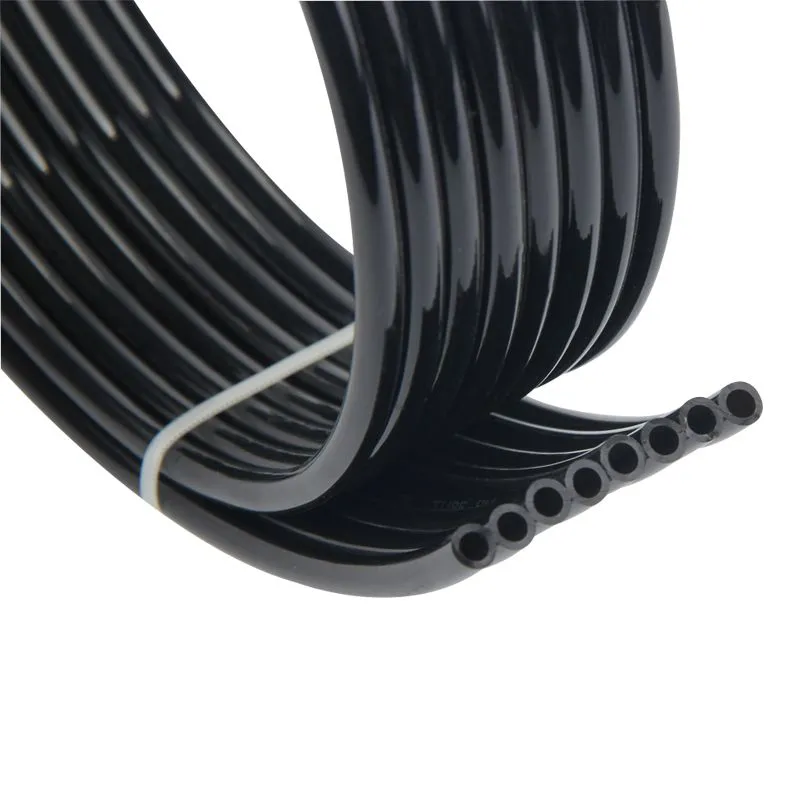Introduction
Pneumatic tubing is an essential component in many industries, including manufacturing, automation, and transportation. It is used to transport compressed air, gases, and fluids from one point to another, enabling various pneumatic systems to function properly. Pneumatic tubing comes in different materials, such as metal and plastic, each with its own advantages and disadvantages. Here some benefits for your reference.

Lightweight and Flexible
Plastic pneumatic tubing is known for its lightweight and flexible nature, making it an ideal choice for applications where weight and flexibility are important factors. Compared to metal tubing, plastic tubing is significantly lighter, which can reduce the overall weight of a system and make it easier to handle and install. Additionally, plastic tubing is more flexible than metal tubing, which allows it to bend and conform to tight spaces without cracking or breaking.
Some examples of applications where plastic pneumatic tubing’s lightweight and flexibility are important include robotics, automation, and medical devices. In robotics and automation, plastic tubing can be used to transport air and fluids to various components, such as grippers, actuators, and sensors, without adding unnecessary weight or limiting movement. In medical devices, plastic tubing can be used to deliver fluids and gases to patients, where flexibility and comfort are critical.

Another advantage of plastic tubing’s flexibility is that it can be coiled and bent without kinking or cracking, which makes it easier to store and transport. This feature also allows for more efficient use of space, as plastic tubing can be routed around obstacles and through tight spaces without requiring excessive fittings or connectors.
Overall, the lightweight and flexible nature of plastic pneumatic tubing makes it a versatile and practical choice for many applications.
Corrosion and Chemical Resistance
Plastic pneumatic tubing is highly resistant to corrosion and many chemicals, making it a reliable choice for applications where exposure to harsh environments is a concern. Unlike metal tubing, plastic tubing does not rust or corrode, which can lead to leaks and system failure. Additionally, plastic tubing is resistant to many chemicals, such as acids, bases, and solvents, which can cause metal tubing to react and degrade over time.
Examples of harsh environments where metal tubing may corrode or react with chemicals include marine, food processing, and chemical plants. In marine environments, metal tubing is exposed to saltwater and other corrosive elements, which can cause it to deteriorate quickly. In food processing, metal tubing can react with acidic or alkaline substances, which can contaminate the food and compromise safety. In chemical plants, metal tubing can be exposed to a wide range of corrosive chemicals, which can cause it to degrade and fail.

Plastic tubing’s resistance to corrosion and chemicals makes it an ideal choice for these and other harsh environments. Additionally, plastic tubing can withstand high and low temperatures, which further enhances its durability and versatility. Plastic tubing can be used in applications where temperatures range from -40°C to 80°C, depending on the material and specific application.
Overall, plastic pneumatic tubing’s corrosion and chemical resistance, combined with its ability to withstand extreme temperatures, make it a reliable and cost-effective choice for many applications.
Easy to Install and Maintain
Plastic pneumatic tubing is easy to install and maintain, making it a popular choice for many applications. Unlike metal tubing, plastic tubing can be easily cut, connected, and disconnected without requiring specialized tools or equipment. This makes it easier and faster to install and modify pneumatic systems, which can save time and labor costs.
Examples of fittings and connectors that are compatible with plastic tubing include push-to-connect, barb, and compression fittings. Push-to-connect fittings are designed to grip the tubing securely without requiring any tools or clamps. Barb fittings use a barbed end to hold the tubing in place, while compression fittings use a ferrule to compress the tubing against a fitting. These types of fittings and connectors are easy to use and can provide leak-free connections, which can improve system efficiency and reliability.
Another advantage of plastic tubing is that it requires less maintenance than metal tubing. Plastic tubing does not rust or corrode, which eliminates the need for lubrication and other maintenance tasks. Additionally, plastic tubing is less likely to develop leaks or cracks over time, which can reduce the need for repairs and replacements. This can save time and money in the long run, as well as improve system uptime and productivity.

Overall, plastic pneumatic tubing’s ease of installation and maintenance, combined with its compatibility with a range of fittings and connectors, make it a practical and cost-effective choice for many applications.
Cost-Effective
Plastic pneumatic tubing is generally less expensive than metal tubing, making it a cost-effective choice for many applications. Plastic tubing is made from materials that are less expensive than metal, such as polyurethane, polyethylene, and PVC. This can result in lower material costs, which can translate into significant cost savings for large-scale projects.
Examples of cost savings that can be achieved by using plastic tubing include lower material and labor costs, faster installation, and reduced downtime due to maintenance and repairs. Plastic tubing is easier to handle and install than metal tubing, which can reduce labor costs and installation time. Additionally, plastic tubing requires less maintenance than metal tubing, which can reduce downtime and repair costs. This can result in improved system uptime and productivity, as well as lower overall operating costs.
Another advantage of plastic tubing is that it can be recycled, reducing waste and environmental impact. Many types of plastic tubing can be recycled and reused, which can help to reduce the amount of waste that ends up in landfills. Additionally, recycling plastic tubing can help to conserve natural resources and reduce energy consumption, which can have a positive impact on the environment.

Overall, plastic pneumatic tubing’s cost-effectiveness, combined with its ease of installation and maintenance, make it a practical and sustainable choice for many applications. By choosing plastic tubing over metal tubing, businesses can achieve significant cost savings, while also reducing their environmental footprint.
Versatile and Customizable
Plastic pneumatic tubing is available in a wide range of sizes, colors, and materials, making it a versatile and customizable choice for many applications. Plastic tubing can be made from a variety of materials, including polyurethane, polyethylene, and PVC, each with its own unique properties and advantages.
Polyurethane tubing, for example, is flexible and abrasion-resistant, making it ideal for applications that require frequent bending and flexing. Polyethylene tubing is lightweight and resistant to chemicals and moisture, making it a good choice for outdoor and industrial applications. PVC tubing is strong and durable, with good resistance to chemicals and UV radiation, making it suitable for a wide range of applications.

In addition to its versatility in terms of materials, plastic tubing can also be customized for specific applications. For example, plastic tubing can be modified to include UV stabilizers, which help to protect the tubing from the damaging effects of sunlight. Antimicrobial agents can also be added to plastic tubing to help prevent the growth of bacteria and other microorganisms, making it ideal for use in medical and food processing applications. Conductive properties can also be added to plastic tubing to help dissipate static electricity, which can be a safety hazard in certain applications.
Overall, plastic pneumatic tubing’s versatility and customizability make it a practical choice for a wide range of applications. By choosing plastic tubing that is tailored to their specific needs, businesses can improve system performance, reduce downtime, and achieve better overall results
Conclusion
In conclusion, plastic pneumatic tubing offers a wide range of benefits that make it a practical and sustainable choice for many applications. Its lightweight and flexible nature, corrosion and chemical resistance, ease of installation and maintenance, cost-effectiveness, and versatility make it a viable alternative to metal tubing in many cases.
By choosing plastic tubing over metal tubing, businesses can achieve significant advantages in terms of performance, efficiency, and sustainability. Plastic tubing is easier to handle and install, requires less maintenance, and can be customized for specific applications, which can result in improved system uptime and productivity, as well as lower overall operating costs.
If you are interested in using plastic pneumatic tubing for your application, we encourage you to contact our sales team for assistance in selecting and ordering the right tubing for your needs. With our expertise and experience in the industry, we can help you find the best solution for your specific requirements, and ensure that you get the most out of your investment in plastic tubing.

